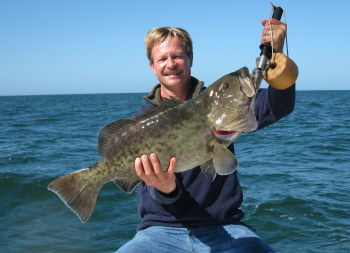 Fishig trip bucket list…
Fishig trip bucket list…
For those who have put in long hours at work for many years and have managed to put a few dollars away, it is time to start thinking about a bucket list. As the decades of life tick by, it seems that every new decade goes by a little bit faster than the preceding one. This will not change. If you are a fisherman with an interest in fishing the shrinking number of remote fishing locations on the planet, it’s time to get started. The logical question is…”Where do I go?” The three locations below are a great start to any anglers bucket list.
Alaska – This fisherman’s paradise comes immediately to mind since it is accessible, English speaking, yet still remote. Alaska hosts a broad range of species, including five salmon species (Chinook, Chum, Coho, Sockeye and Pink), four trout species (Rainbow/Steelhead, Cutthroat, Dolly Varden and Lake), Arctic Char, Grayling, Pike, Whitefish, Halibut, Lingcod, and Rockfish, among others. Although some type of fish can be caught in Alaska during any time of year, the primary “fishing season” is typically considered to be from May through September. Spin snd fly fishing opportunities abound for Salmonids. Considering Alaska’s vast size, its population is, surprisingly, under a million people…approximately 750,000. This speaks to the vast amount of unexplored wilderness in this great state. Fantastic species diversity exists here and filling the freezer at home with Halibut, Lingcod and Salmon is a lingering benefit of this journey. Fisherman can choose to rough it, camping along rivers and drift fishing, or can hole up at a five star lodge with fishing right out the back door or just a short float plane ride away.
Amazon – This vast rainforest accounts for half of the world’s rainforests, supplies 20% of the world’s oxygen and covers 2.1 million square miles. Brazil, Columbia and Peru make up more than 80% of Amazonia, with the reminder split between 6 other countries. Portuguese is spoken in Brazil, with Spanish being spoken in the vast majority of other countries. There are two reasons that the Amazon is a top bucket list fishing location. First, one of the most exciting gamefish on the planet lives here, the peacock bass. Second, the fish biodiversity is unmatched anywhere else on the planet. The most popular gamefish targeted would include Peacock Bass, Golden Dorado, Payara and the Wolffish. However, if just catching large fish is the primary focus, the Amazon hosts some of the largest catfish in the world…the Jau, Paraiba, and Redtail. All can exceed 100 pounds with the Paraiba surpassing 300 lbs. Arapiama are among the largest freshwater fish in the world…with the biggest specimen recorded tipping the scales at 440 pounds. Add to this multitudes of other species, including the Arowana and Piranha, and this region quickly becomes a must visit location. Considering the remoteness of these Amazonian fishing locations, floating and river front accommodations can be quite comfortable.
Patagonia – This beautiful, vast and remote expanse of land makes up the southern tip of South America….about 300,000 square miles of Argentina and 130,000 square miles of Chile. Patagonia is also very sparsely populated, with about 2 million people living within its confines. Spanish is the primary language. Prime fishing season here is generally regarded as November through April. As Patagonia is on the “other side” of the equator, seasons are flipped so November / December represents spring conditions (higher water but still generally clean), with January through March being summer, and April and May being fall. One of the most interesting facts about Patagonia is that its world renowned trout fishery is a result of the introduction of non native species. The brook, brown and rainbow trout found here were all introduced around the turn of the 19th century…and this subsequently led to one of the best fly fishing locations for trout on the planet. Rainbows are the most abundant, followed by the browns with brook trout being significantly less common. In some locations, there are sea run browns, which can be quite large. Due to Chilean aquaculture programs, escapee Chinook, Coho and Atlantic Salmon can also be found in some of these rivers, although their populations are smaller and generally not the reason anglers come here.


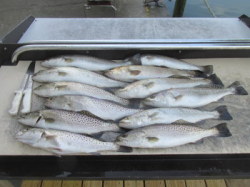
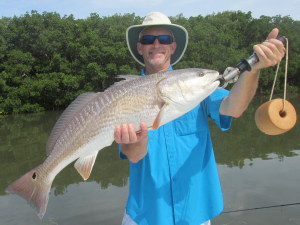
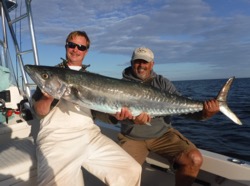 Another reason to consider wind direction is when planning on where to fish. On a strong west wind, fishing outside off the beach is not advisable and fishing the eastern shore of the Inter-Coastal Waterway may not be either. Getting on the leeward side (east) of the larger barrier islands…Caledesi and
Another reason to consider wind direction is when planning on where to fish. On a strong west wind, fishing outside off the beach is not advisable and fishing the eastern shore of the Inter-Coastal Waterway may not be either. Getting on the leeward side (east) of the larger barrier islands…Caledesi and 
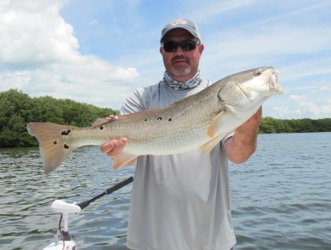

 Anglers fishing for trout in fresh water rivers are very familiar with this term. The key to getting a trout to eat a dry fly is to cast the line forward and at such an angle that the fly will drift for a maximum length of time, through the desired area, without the rest of the line dragging the fly. The anglers may make small rolling adjustments, rolling the line upriver (or mending the line), to aid in the process of the fly showing no drag. Any trout that is eyeballing this fly, will immediately drop off the second this fly starts dragging, as that is not how an insect on the surface would behave.
Anglers fishing for trout in fresh water rivers are very familiar with this term. The key to getting a trout to eat a dry fly is to cast the line forward and at such an angle that the fly will drift for a maximum length of time, through the desired area, without the rest of the line dragging the fly. The anglers may make small rolling adjustments, rolling the line upriver (or mending the line), to aid in the process of the fly showing no drag. Any trout that is eyeballing this fly, will immediately drop off the second this fly starts dragging, as that is not how an insect on the surface would behave. 